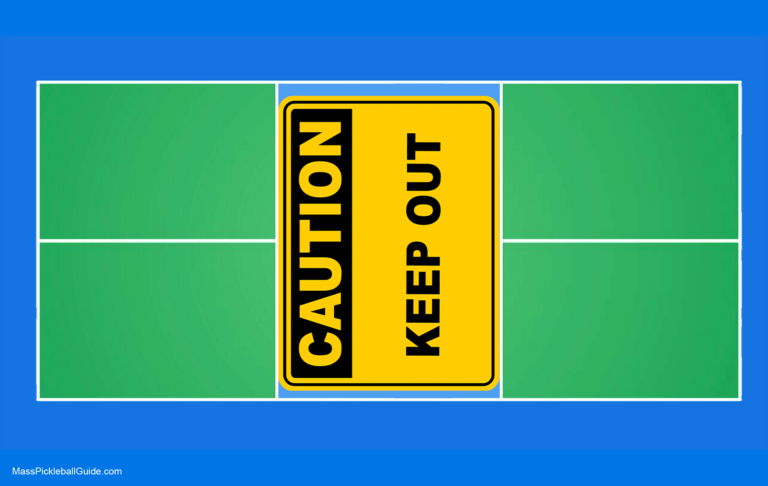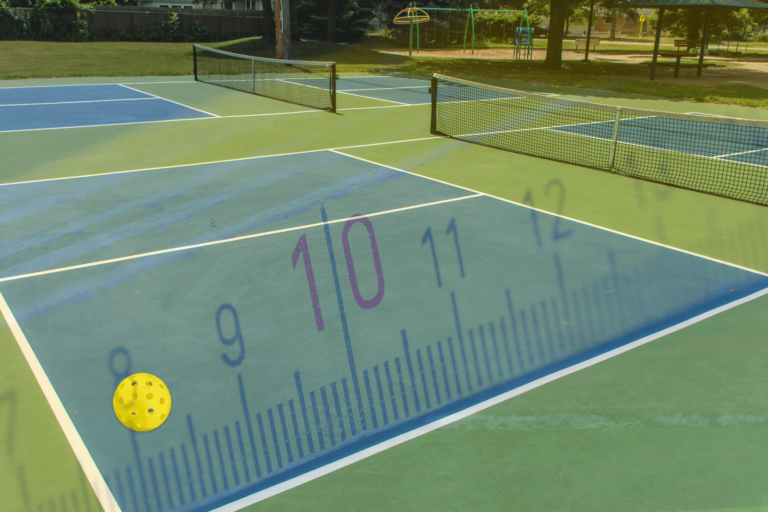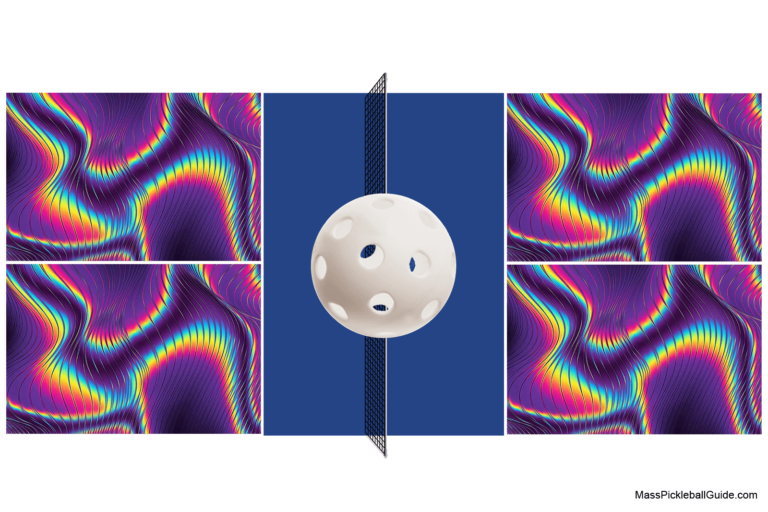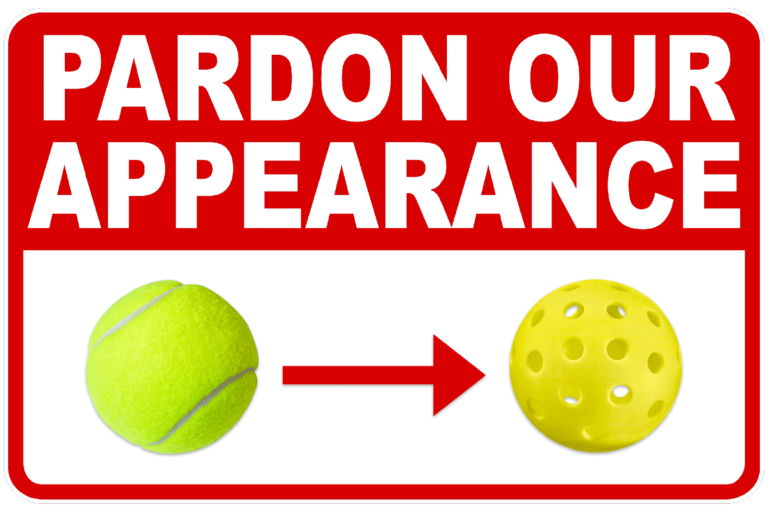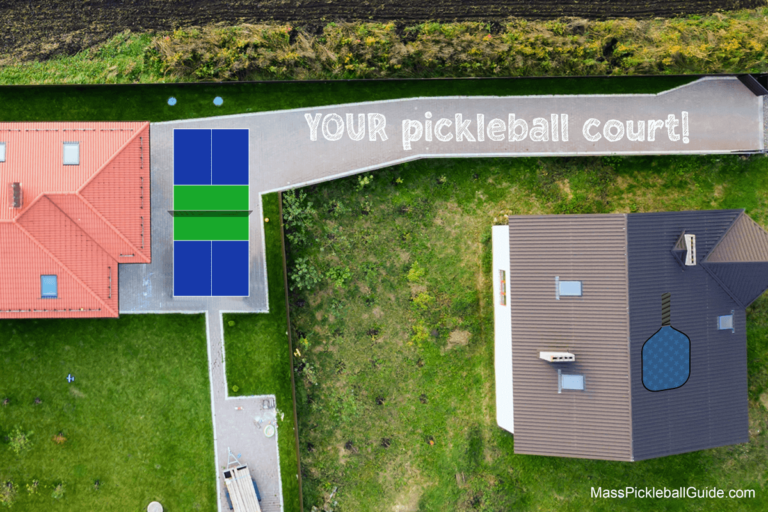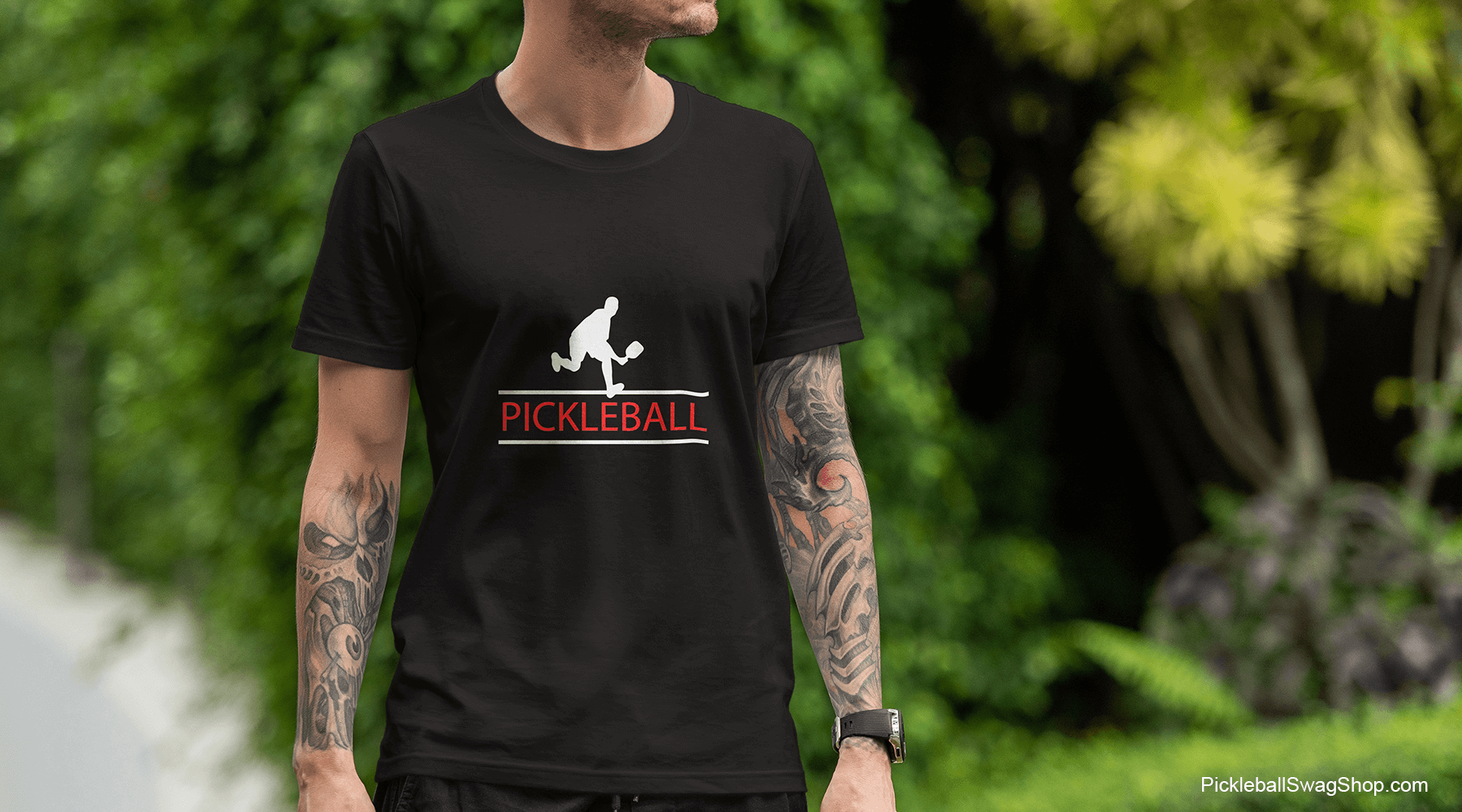The drawbacks of raw concrete for pickleball courts – why it’s not ideal
measure twice, pour once
Are you considering raw concrete for your pickleball court? While it may seem like a strong, durable choice, raw concrete isn’t always the best option. In this article, we delve into the reasons why raw concrete pickleball courts may not be ideal, and what alternatives you should consider instead.
BTW, when we say “raw” concrete we mean just plain concrete – nothing on top, no coating/padding, no paint, etc.
There are several reasons why raw concrete isn’t suitable for pickleball courts:
Physical Impact on Players
First and foremost, raw concrete can be incredibly hard on a player’s body. In a fast-paced game like pickleball, where there’s plenty of running and jumping involved, playing on a raw concrete surface can have a significant impact on a player’s:
- Soles
- Lower legs
- Back and hip flexors
- Knees
Over time, this can not only lead to immediate injury but can also contribute to long-term physical issues. There are enough pickleball injuries without adding more to the list.
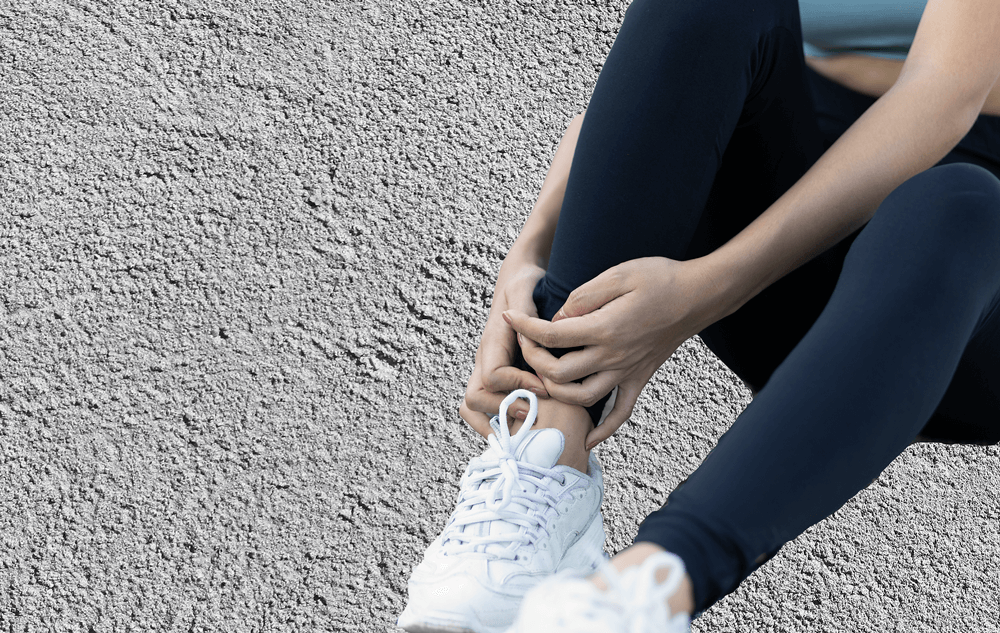
Playing pickleball on raw concrete can be hard on a player’s body, especially their legs. Concrete is a very hard surface (yes it’s true!), and it can create a significant impact on your feet, lower legs, and back when you run or jump on it. This can lead to injuries or chronic soreness.
Potential Damage to Equipment
Beyond the physical impact on players, raw concrete can also be detrimental to the equipment used in pickleball. The pickleball ball can degrade or wear out very quickly when continuously bounced off of a hard concrete surface. All those matches and all those volleys will take their toll on the ball.
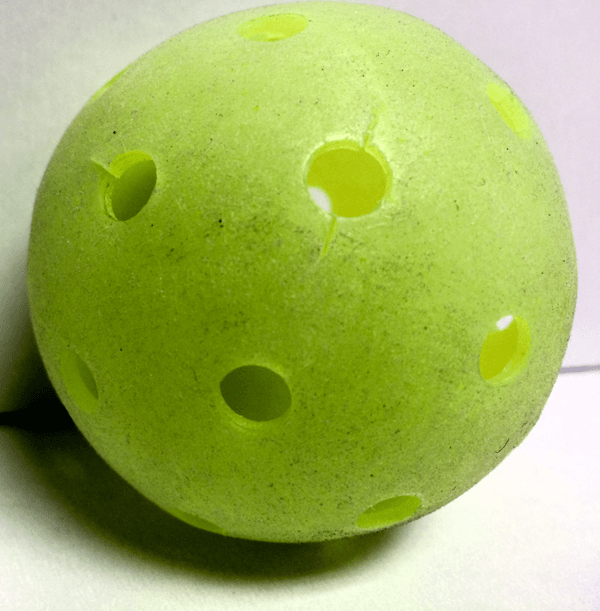
Increased Safety Risks
Safety is paramount in any sport, and pickleball is no exception.
The hard surface of raw concrete can become incredibly dangerous if a player falls, as the impact can be quite severe. A concrete pickleball court is very unforgiving. The only thing that’s going to “give” if you fall is you. If you get away with a minor cut, then consider yourself lucky. Next time it could be a brain bleed.
Unsuitability for Outdoor Courts
If your pickleball court is outdoors, raw concrete becomes an even less desirable choice. When rainwater hits a polished concrete floor, it can make the surface slippery and unsafe for players. Concrete, especially if not poured by a professional, can be very slippery with just a rain mist.
The Solution: Adding a Top Layer to Concrete
To counter these issues, it is common to add a top layer of a softer padding material, typically polyurethane or acrylic, over the concrete base of a pickleball court. This added layer serves multiple functions:
- It provides a more forgiving surface for players, reducing the potential impact on their bodies.
- It helps preserve the longevity of the equipment used.
- It increases overall player safety by providing a surface that’s less likely to cause injury in the event of a fall.
Not only can a bare concrete surface be harmful to players, but it can also wear out the pickleball more quickly. Despite the ball bouncing well on concrete, it will degrade more rapidly, leading to a shorter lifespan.
Covering Concrete in Pickleball Courts
Covering the concrete base of a pickleball court is a necessary step to enhance safety and improve gameplay. As established, pickleball surfaces require protection with a top layer of polyurethane or acrylic. This layer provides greater stability for the players and absorbs shocks, reducing the risk of injuries and long-lasting soreness after a game.
Professionals lay this topcoat over the concrete flooring of pickleball courts. This is done not only for safety but also to ensure a better playing experience. A steady surface is essential in pickleball courts as it allows the wiffleball to bounce properly. If the ball doesn’t bounce sufficiently, it could disrupt the game, potentially leading to an early end of the match.
What’s our point?
Pickleball courts should have a concrete base, which is then covered with a polyurethane or acrylic coat. The surface is further treated with a sealant for better grip. This combination ensures safety, comfort, and an optimal bounce for the pickleball, making the game more enjoyable.
Laying a Concrete Pickleball Court
When it comes to creating a pickleball court, laying the concrete is a crucial step. This task, whether performed with or without a top layer, can be complex and needs to be executed correctly. If not done properly, the concrete can become unstable and deteriorate over time.
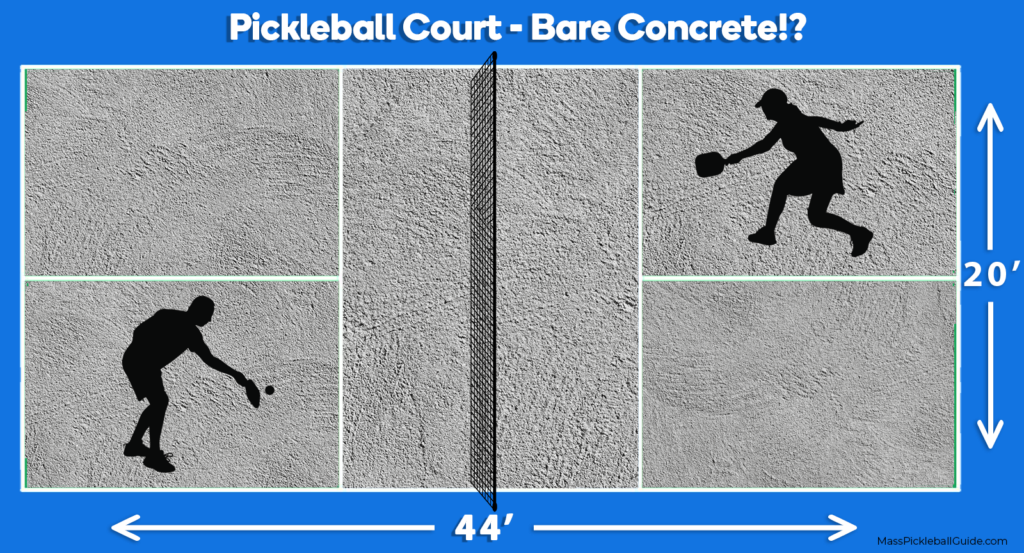
You get one bite at the apple here. You’re not planting a bush or putting together a gas grill. You’re laying (pouring?) concrete that’s measures at least 20’ by 44’ – this is a big deal. If you make a mistake or cut corners, there’s no going back. You’re stuck with your deformed pickleball court until you sell the house!
It gets worse:
Concrete is inherently a material that absorbs moisture. This can lead to the formation of gaps in the surface over time, causing the top layer, if applied, to swell in certain areas. As a result, players can lose their footing if they step on these uneven parts, creating a potential hazard.
In simple terms, whether it’s covered with a softer layer or not, improperly placed concrete in a pickleball court can be dangerous. Therefore, correct placement and preparation of concrete is critical in the creation of a pickleball court.

